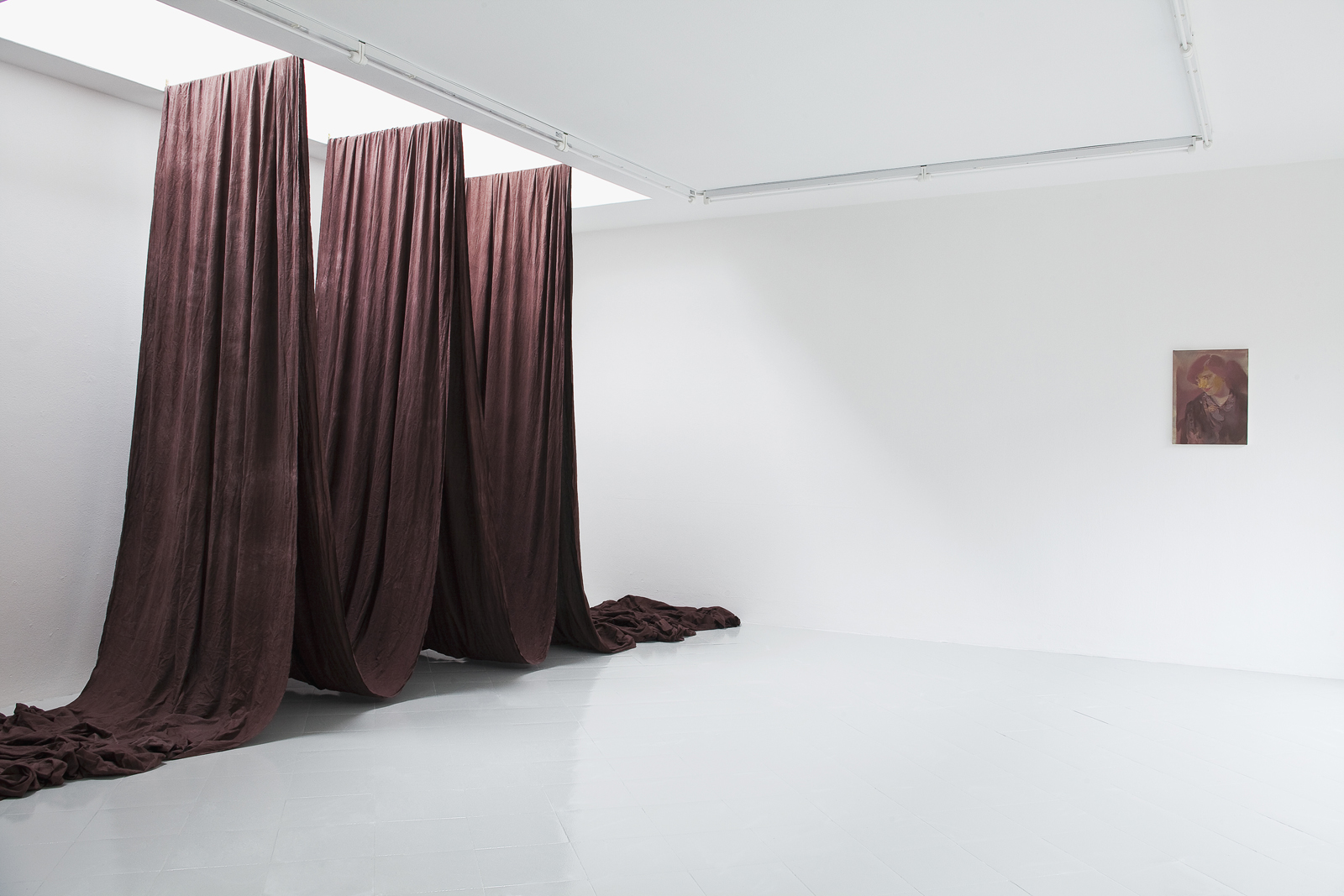
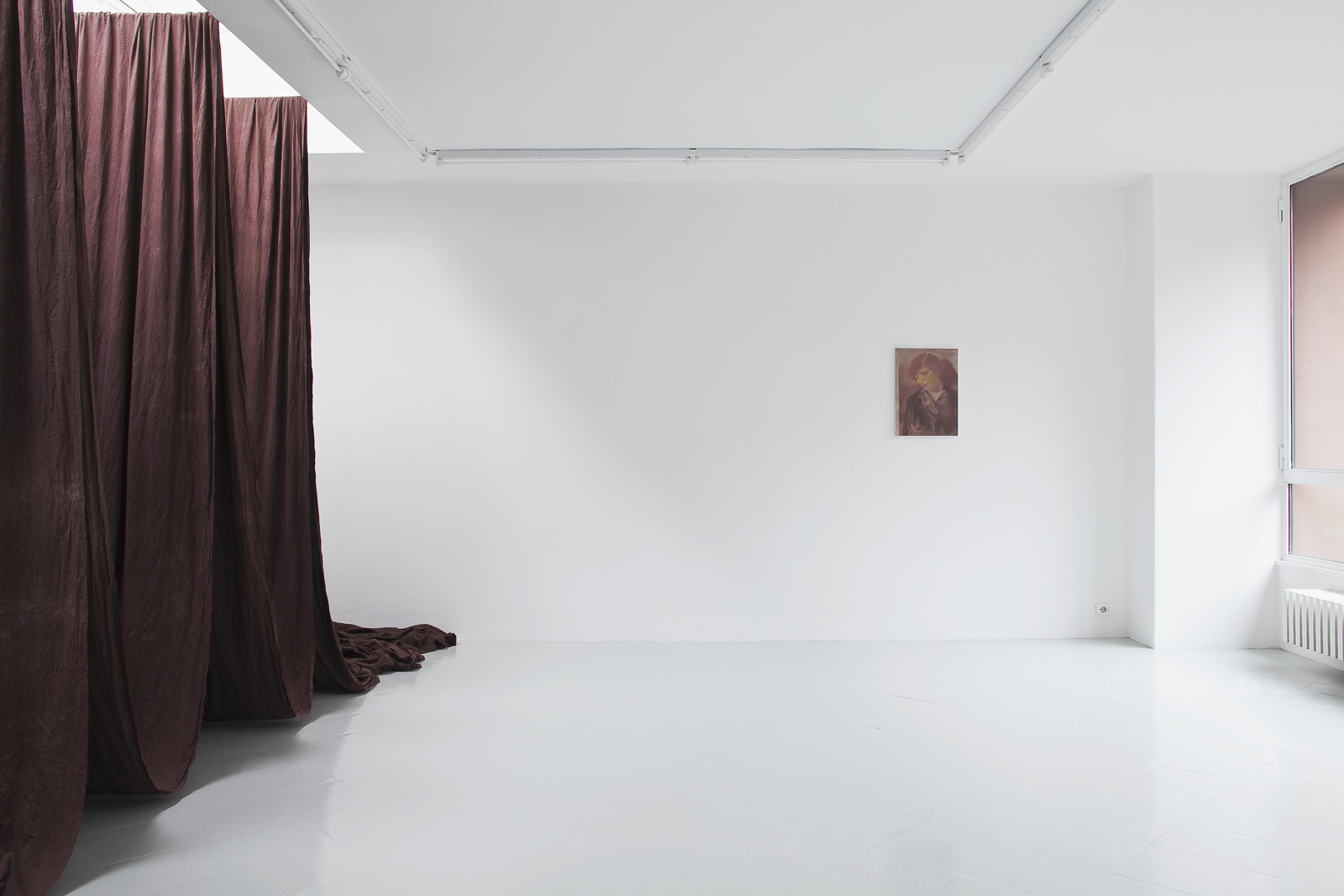
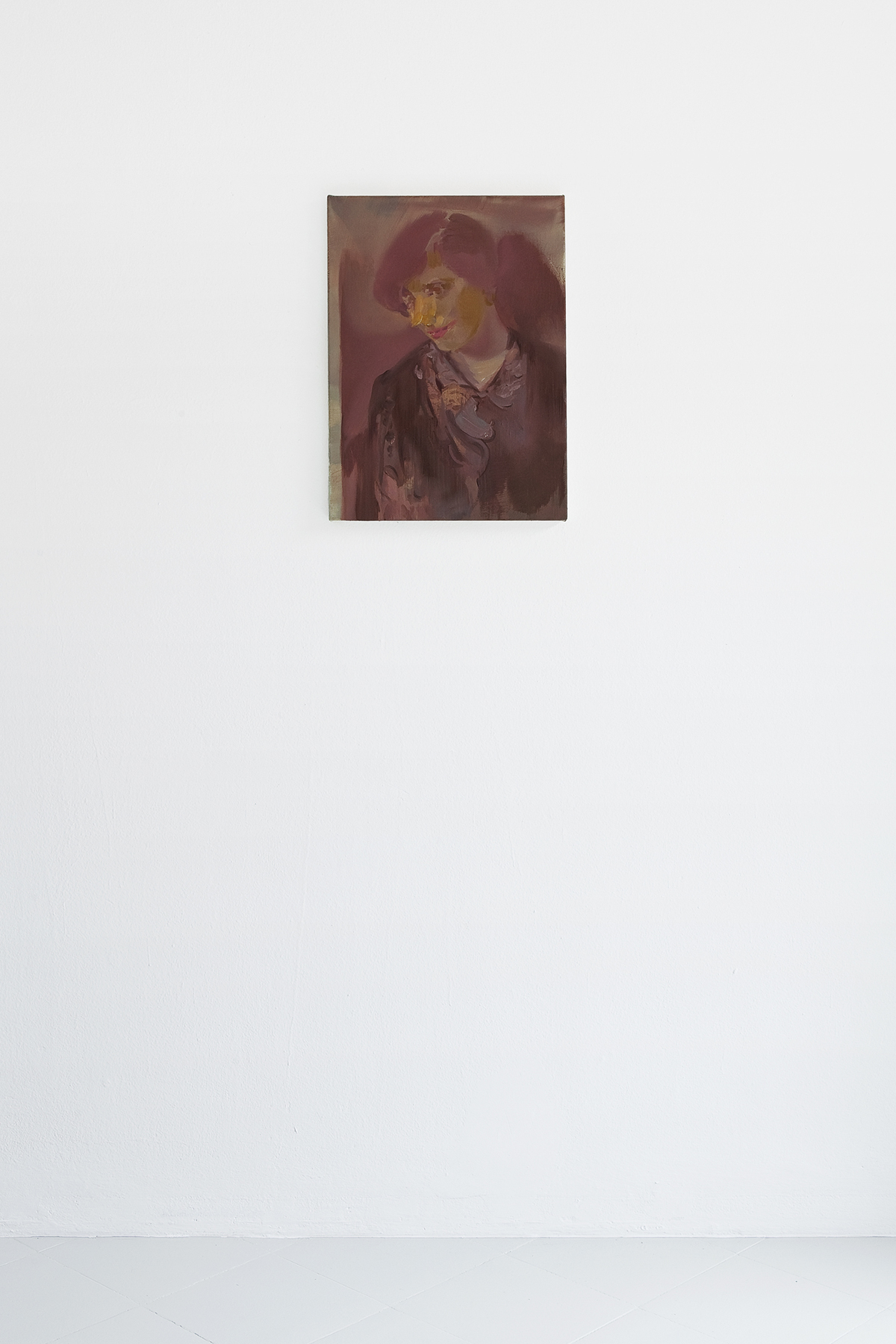
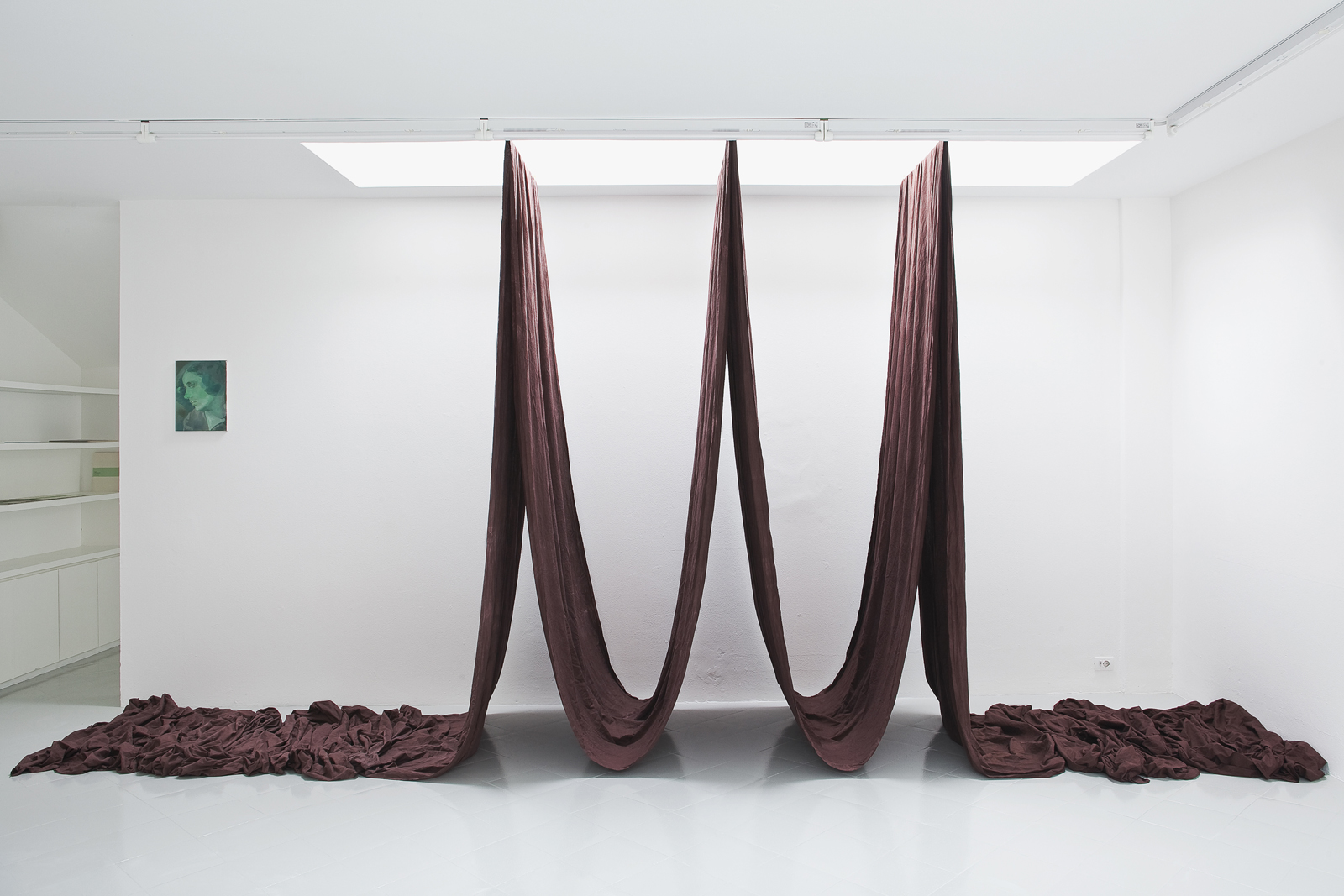
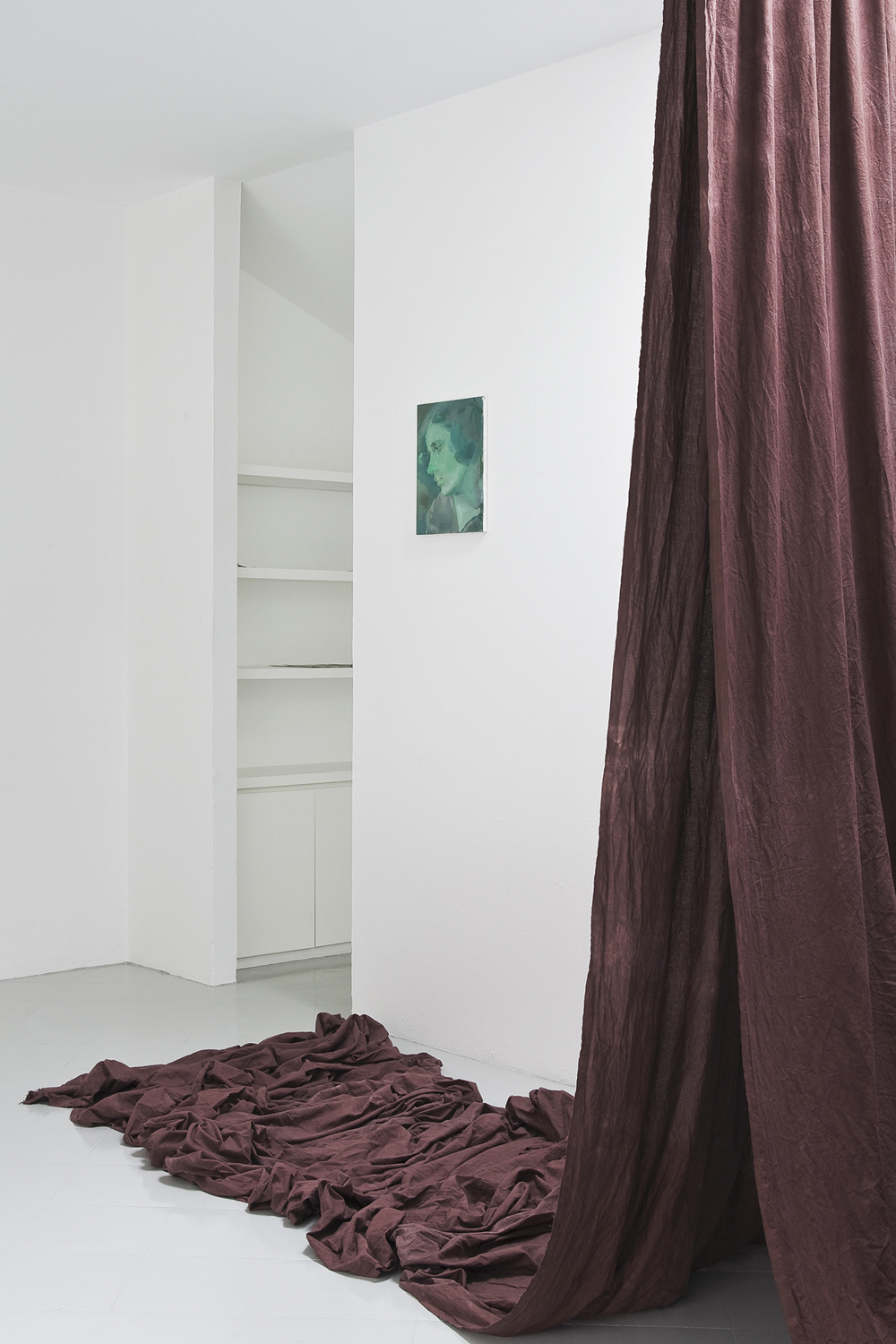
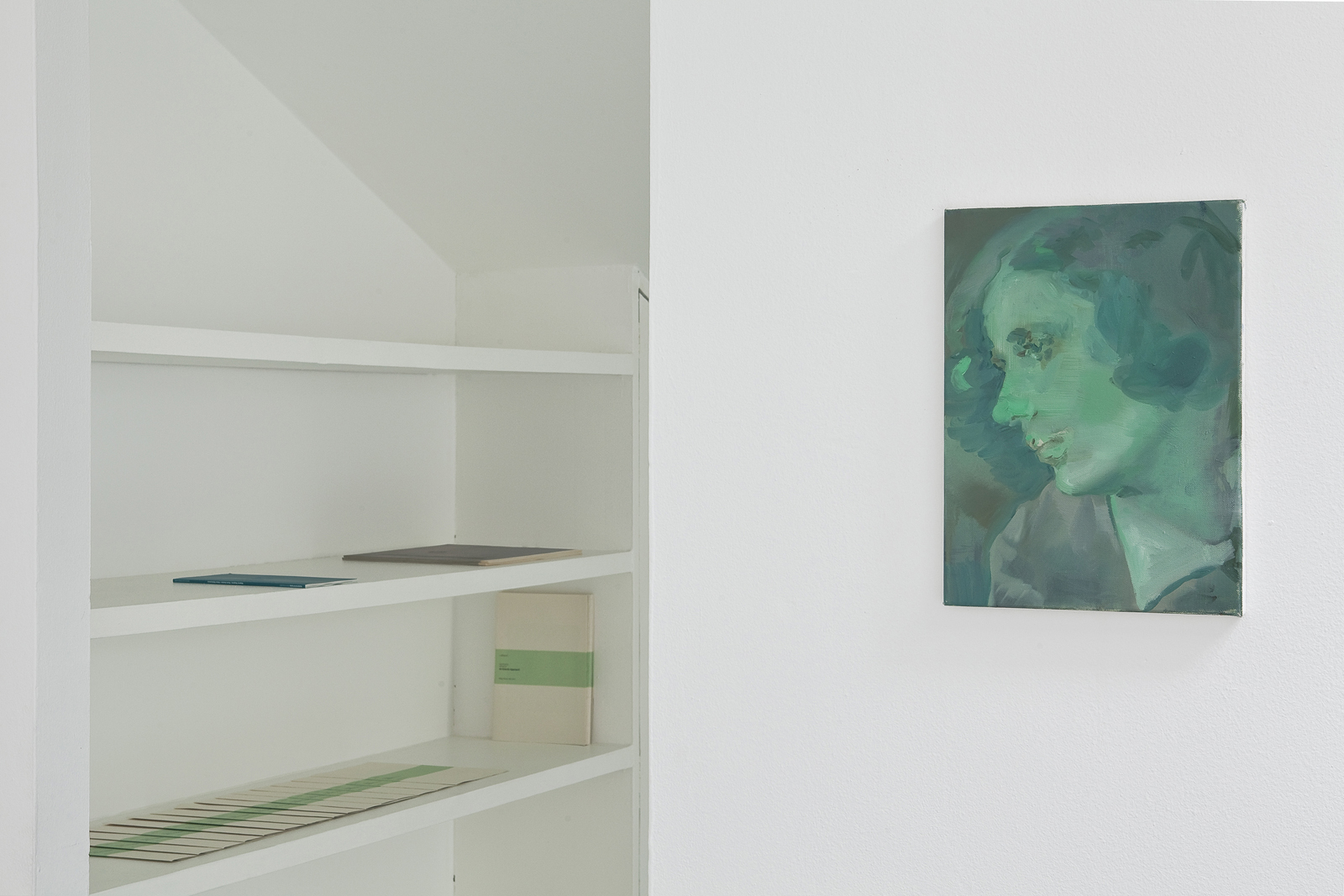
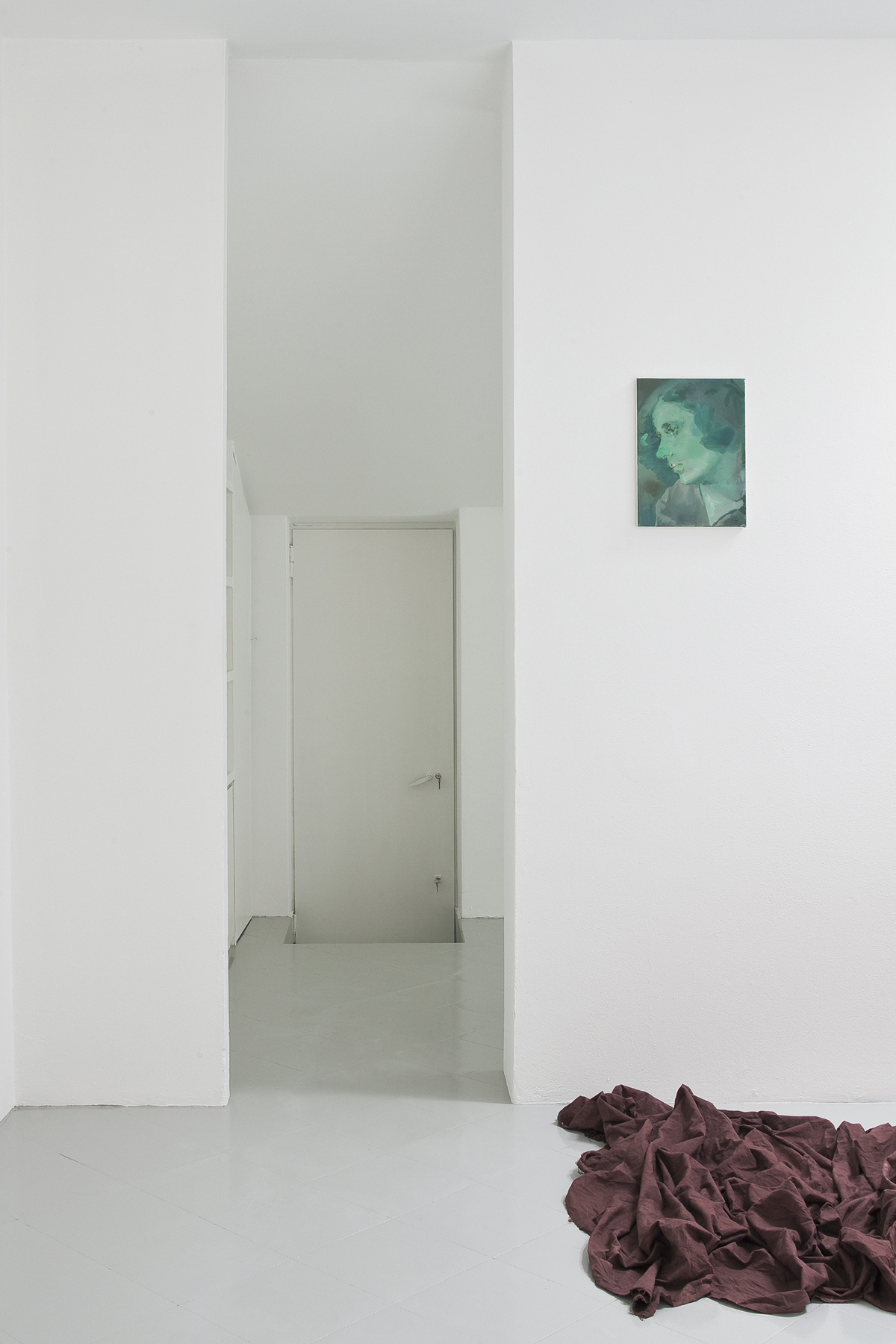
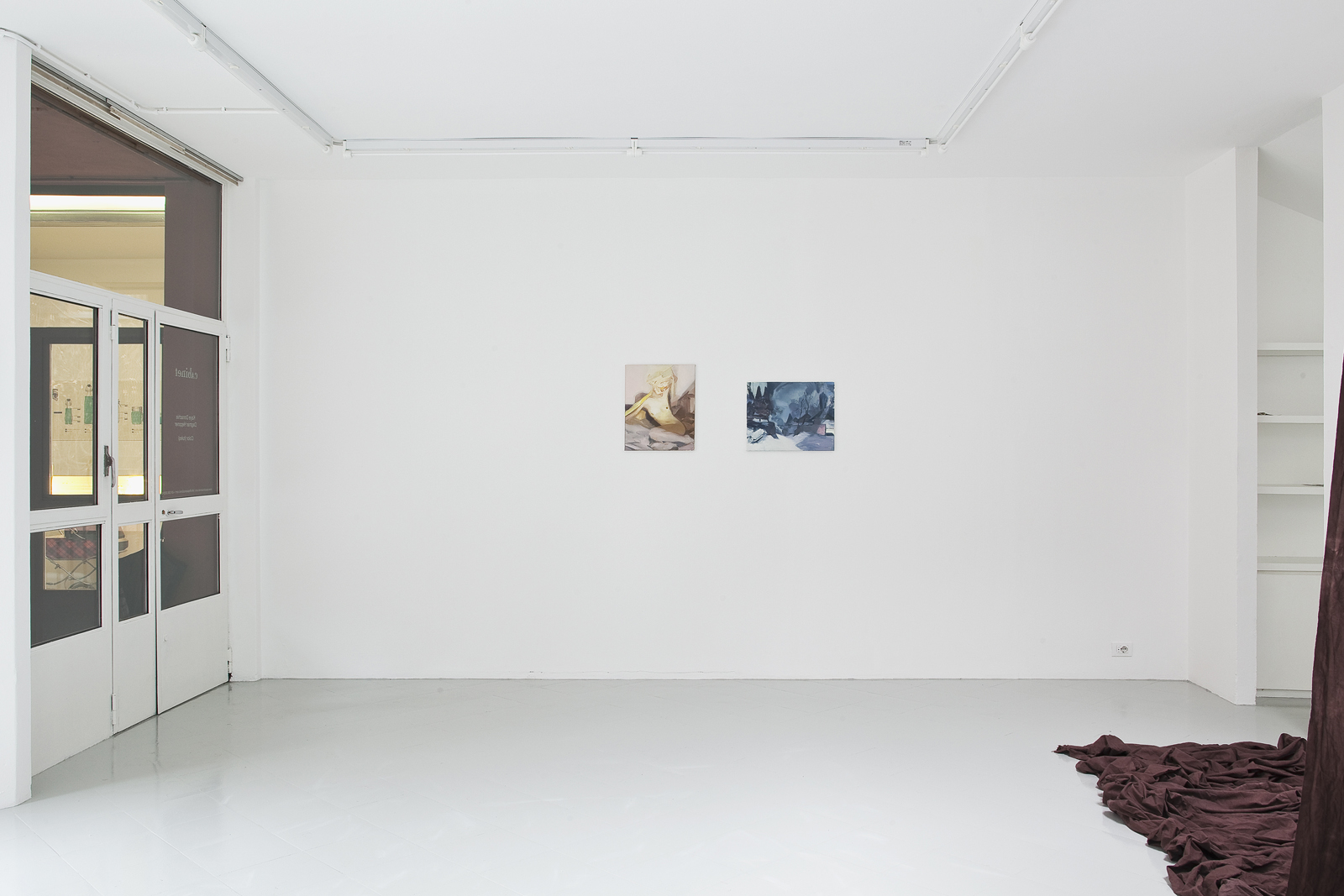
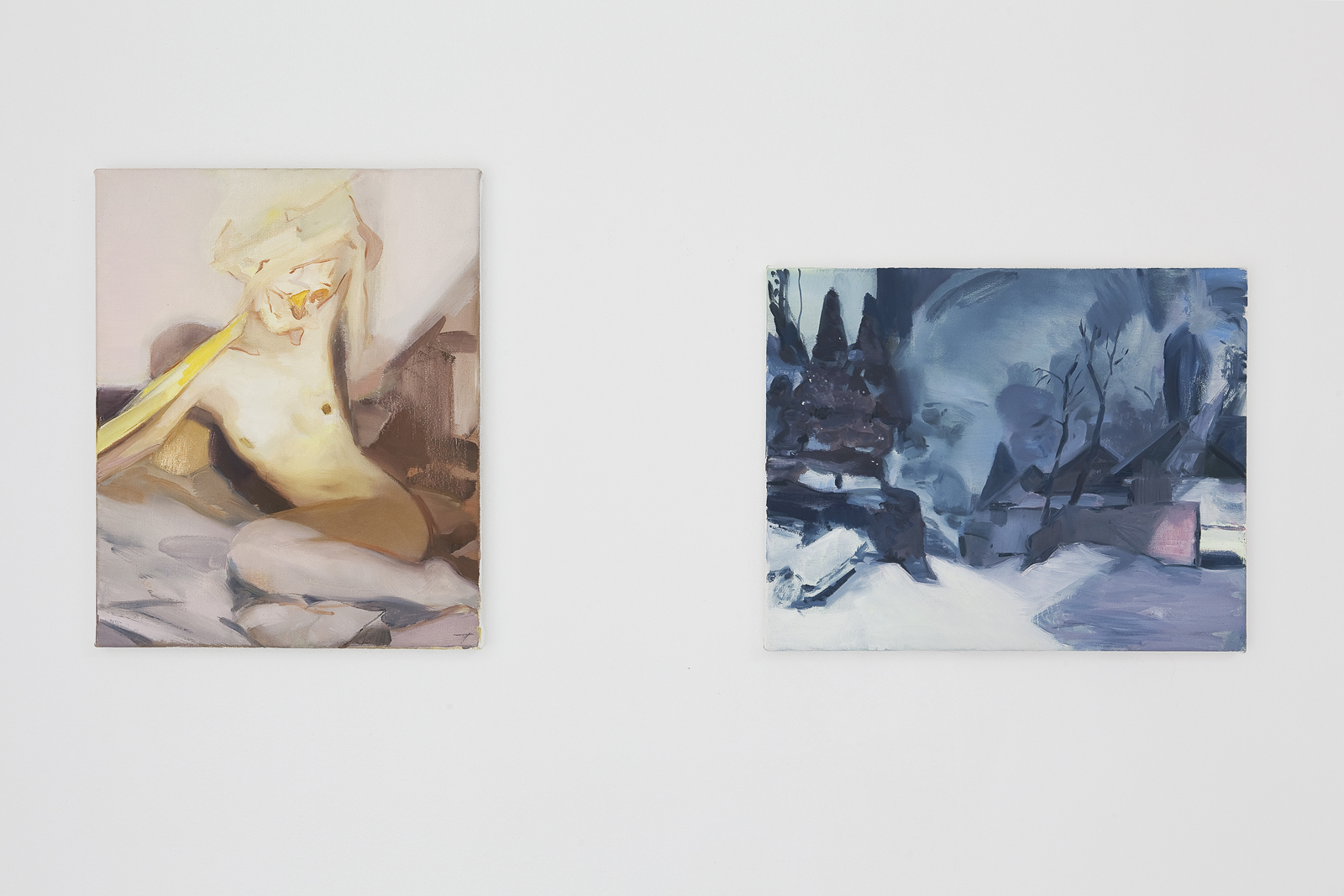
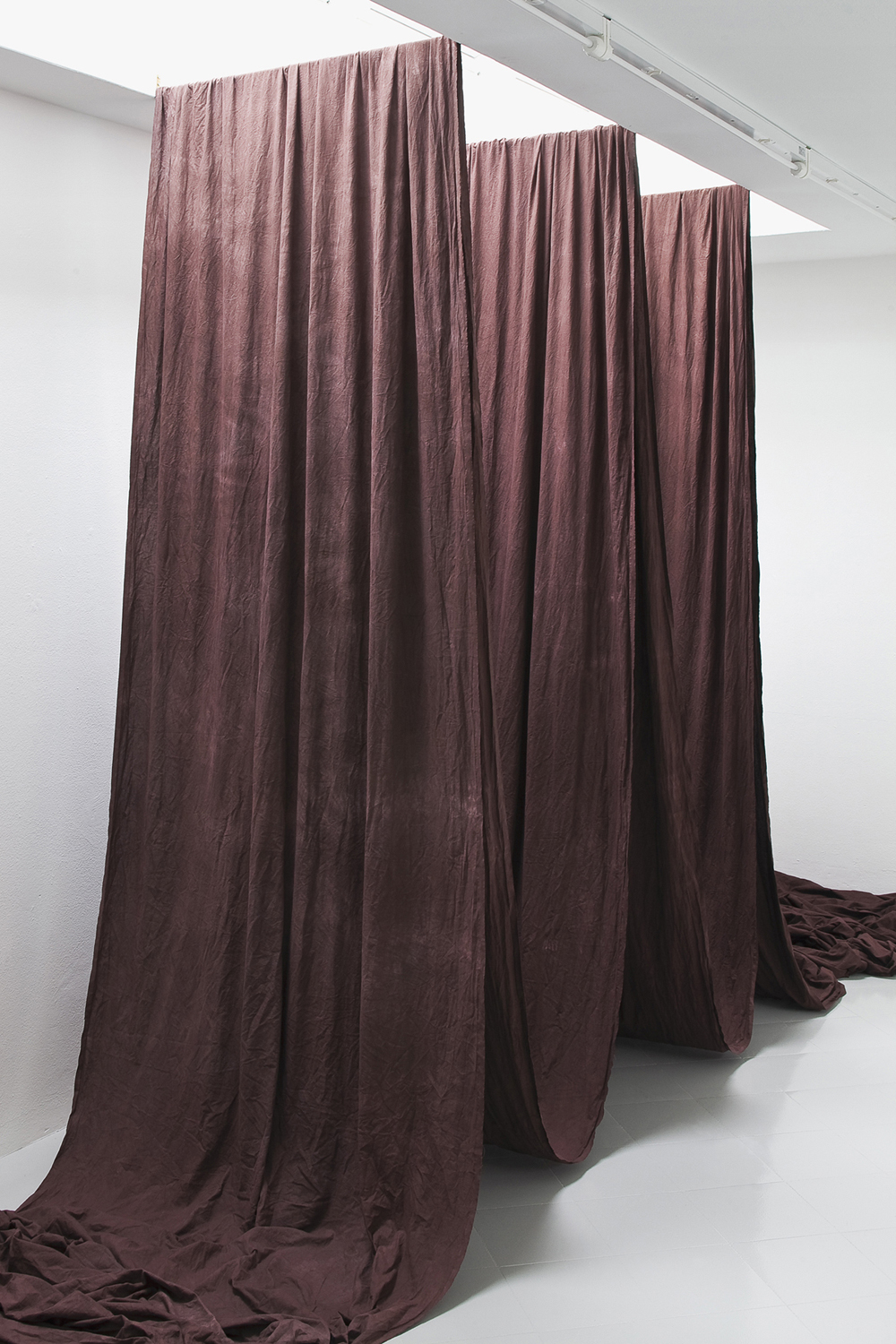
photo: Filippo Armellin
Il colore si fissa, penetra nelle trame della tela accompagnato dalle setole di un pennello o dalla fluidità dell’acqua. In una forma di tonalismo contemporaneo, che affida al colore e alle sue variazioni di intensità l’affioramento di una forma plastica, lievi modulazioni cromatiche modellano e descrivono figure e volumi. La struttura compositiva emerge dall’accumulo di tocchi cromatici e la scultura si manifesta nella presenza variabile del colore. “Un impasto, per concrezioni e penombre, di luce del mondo con la materia delle cose”, un orfismo pittorico libero dall’astrazione geometrica e reso contemporaneo dal recupero reale di esperienze soggettive. La risoluzione si colma di segni carichi di luce e di plasticità vibrante senza confini strutturali - Kaye Donachie e Dagmar Heppner sembrano abbandonarsi alle regole del colore - temperatura Romantica e registro di equivoci visivi nelle tele di Donachie, idea primordiale che si fa istintiva e ridondante nella scultura della Heppner.
Nella pittura di Donachie si attua una ricerca intima fatta di indizi temporali suggeriti, di volti malinconici sospesi nel tempo, di immagini che affiorano per poi perdersi nelle intense quinte cromatiche. Sono cristallizzazioni di attimi temporali perduti, di racconti interrotti, dove elementi estranianti consegnano alla storia altri significati. L’attuazione di una surrealtà pittorica si traspone nei titoli che suggeriscono una figurazione fatta di fisionomie misteriose avvolte in paesaggi desolati o androgini nudi di donna definiti da pochi tratti sicuri. Il colore disegna, il tono definisce luce ed ombre, come lo scultore fa con la pietra Donachie toglie materia per fare entrare la luce, illumina scene nascoste per imprimere nel ricordo ciò che andrebbe perduto.
Il lavoro scultoreo della Heppner concretizza materialmente la scelta di una tonalità decisa, fasce di colore disegnano lo spazio definendo un’astrazione libera fissata nell’aria. Un drappo leggero, sospeso, diviene gesto tridimensionale che si abbandona al suolo per protendere informe e spontaneo in concrezioni volumetriche di luce e ombra. Pittura spaziale o scultura bidimensionale, il lavoro della Heppner sembra essere una trascrizione aerea di una costruzione assonometrica; parte da un segno cromatico minimale che trasforma in solido complesso in un trionfo di opulenza ritmica chiaroscurale. 32 metri di stoffa danzano in un ipotetico spazio Euclideo. 32 nuance mischiate tra loro imprimano sulla tela una tonalità compressa che soggiace alle regole oscure del colore.
The color is fixed, it penetrates the threads of the canvas accompanied by the bristles of a brush or by the fluidity of water. In a sort of contemporary tonalism, that entrusts the color and its variations of intensity with the emerging of a plastic form, soft chromatic modulations mould and describe shapes and volumes. The compositional structure emerges from the accumulation of touches of color and the sculpture reveals itself in the changeable presence of the color. "A mixture, for concretions and shadows, of light of the world with the matter of things*", a pictorial Orphism free from the geometric abstraction and made contemporary by the actual recovery of subjective experiences. The resolution is full of signs loaded with light and vibrant plasticity without structural limits - Kaye Donachie and Dagmar Heppner seem to indulge in the rules of color - that becomes Romantic temperature and register of visual misunderstandings for Donachie, while primordial and instinctive idea in Heppner's redundant sculpture.
Donachie's painting carries out an intimate research made of temporal clues just suggested, of gloomy faces in a suspended time, of images emerging and getting lost in intense coloured scenes. They are crystallizations of lost moments, of interrupted stories, where alienating elements give the story other meanings. The implementation of a pictorial surreality is transposed on the titles of her works that suggest a kind of figuration made up of mysterious faces wrapped in desolate landscapes or androgynous female nudes, defined by few strong brushstrokes. The color designs, the tone sets light and shadows, as the sculptor does with the stone, Donachie takes the matter off to let the light in, she lights hidden fluid scenes to imprint in one's memory what otherwise would get lost.
Heppner's sculptural work materially realizes the choise of a strong tone, stripes of color design space defining a free abstraction fixed in the air. A light cloth, suspended, becomes a three-dimensional gesture that falls to the floor to lean out, shapeless and spontaneous, in volumetric concretions made of light and shadow. Spatial painting or two-dimensional sculpture, Heppner's work seems to be an air transcription of an axonometric construction; she starts from a minimal chromatic sign that she turns in a complex solid in a triumph of rhythmic opulence of light and shade effects. 32 metres of cloth dance in a hypothetical Euclidean space. 32 nuances mixed with themselves imprint on the canvas a compressed tone that is subjected to obscure color rules.
-
Kaye Donachie bio
Glasgow 1970. Lives and works in London
Selected Solo Exhibitions: 2012 Kaye Donachie, Marianne Boesky Gallery, New York; 2010 Kaye Donachie, Maureen Paley, London; 2009 Walpurgis Night, Peres Projects, Berlin, To conjure you up and make you fade, Marianne Boesky Gallery, New York; 2006 Kaye Donachie, John Connelly Presents, New York; 2005 Kaye Donachie, Peres Projects, Los Angeles, Kaye Donachie, Maureen Paley, London; 2004 Never Learn Not To Love, Artists Space, New York, Kaye Donachie, Maureen Paley, London; 1998 Kaye Donachie, Maureen Paley Interim Art, London; 1992 Kaye Donachie, Malvern Arts Centre, Worcester.
Dagmar Heppner bio
Hamburg 1977. Lives and works in Berlin and Basel
Selected Solo Exhibitions: 2011 Echo, Raum für aktuelle Kunst, Luzern, Kurz Raus, Galerie Eva Winkeler, Köln; 2010 SUNDAY Fair, with BolteLang, London, Dagmar Heppner, Guerilla Galerie, St. Gallen, Invisible, Nextex, St. Gallen; 2009 d.h., BolteLang Berlin; 2008 Positions, Art Basel Miami Beach, with Eva Winkeler, Hörensagen, New Jerseyy, Basel, Auswärts, Galerie Mark Müller, Zurich, Opposites & Counterparts, Galerie Eva Winkeler, Frankfurt; 2006 Stick & Stones, with Karin Hueber, Vrits, Basel, Lust, with Karin Hueber and Kilian Rüthemann, Rottweil; 2005 Ni fleurs, ni couronnes, Kunsthaus Baselland, Muttenz; 2004 and, with Martin Hoener, Schalter, Basel.
-
thanks to BolteLang, Zurich and Maureen Paley, London